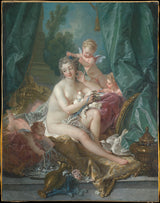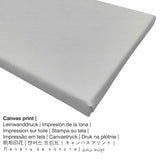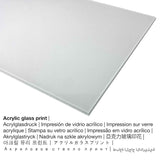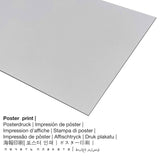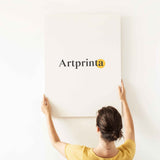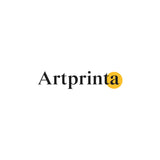François Boucher, 1751 - Ụlọ mposi nke Venus - mbipụta nka mara mma
Ụtụ gụnyere. Mbupu gbakọrọ na ndenye ọpụpụ.
Ibe nka Ụlọ mposi nke Venus site n'aka nna ochie François Boucher dị ka ihe osise ọhụrụ gị
The nka ochie ihe esere ihe nka French omenkà François Boucher in 1751. The original version was painted with the size of 42 5/8 x 33 1/2 in (108,3 x 85,1 cm) and was painted with the Usoro of mmanụ na kwaaji. Today, the artwork forms part of the The Metropolitan Museum of Art's collection. With courtesy of - Ụlọ ihe ngosi nka nke Metropolitan, New York, Arịrịọ nke William K. Vanderbilt, 1920 (ikike - ngalaba ọha). : Arịrịọ nke William K. Vanderbilt, 1920. Na mgbakwunye na nke a, nhazi nke mmepụta dijitalụ bụ Eserese ma nwee oke nke 3: 4, nke pụtara na ogologo bụ 25% mkpụmkpụ karịa obosara. François Boucher was a male painter, whose style can primarily be attributed to Rococo. The artist was born in 1703 and died at the age of 67 na 1770.
Original artwork information as provided from The Metropolitan Museum of Art (© - by The Metropolitan Museum of Art - Museumlọ ihe ngosi nka nke Obodo)
Madame de Pompadour, mistress of Louis XV, admired Boucher and was his patroness from 1747 until her death in 1764. This famous work was commissioned for the dressing room at Bellevue, her château near Paris. The bodies of the goddess and her cupids are soft, supple, and blond. The carved and gilded rococo sofa, the silk, velvet, and gold damask drapery, are heavy and elaborate enough for the Victorian era.
Nkọwa ihe osise
| Aha nke eserese ahụ: | "The Toilette of Venus" |
| Nhazi nka: | sere |
| Okwu nche anwụ: | nka ochie |
| Time: | 18th narị afọ |
| Emepụtara na: | 1751 |
| Afọ nka: | 260 afọ |
| Usoro nka izizi: | mmanụ na kwaaji |
| Nha izizi nka: | 42 5/8 x 33 1/2 na (108,3 x 85,1 cm) |
| Ụlọ ihe ngosi nka / mkpokọta: | Museumlọ ihe ngosi nka nke Obodo |
| Ebe ebe ngosi nka: | New York City, New York, Njikota Obodo Amerika |
| E Nwere na: | Museumlọ ihe ngosi nka nke Obodo |
| License: | ngalaba ọha |
| Site n'aka: | Ụlọ ihe ngosi nka nke Metropolitan, New York, Arịrịọ nke William K. Vanderbilt, 1920 |
| Ebe kredit nke ọrụ nka: | Arịrịọ nke William K. Vanderbilt, 1920 |
Banyere onye na-ese ihe
| Aha onye nka: | François Boucher |
| okike onye nka: | nwoke |
| Obodo onye nka: | French |
| Ọrụ onye na-ese ihe: | onye na-ese ihe |
| Obodo onye nka: | France |
| Nkewa onye nka: | nna ukwu ochie |
| Ụdị nke onye na-ese ihe: | Rococo |
| Akwụsị: | 67 afọ |
| Afọ ọmụmụ: | 1703 |
| Nwụrụ n'afọ: | 1770 |
| Nwụrụ na (ebe): | Paris |
Họrọ nhọrọ ihe onwunwe gị
In the dropdown menu next to the product offering you can pick the material and size of your choice. The following sizes and materials are the options we offer you for individualization:
- Mbipụta akwụkwọ mmado (ihe kwaaji): The Artprinta poster is a UV printed sheet of flat canvas paper with a fine surface finish. Please note, that depending on the size of the poster we add a white margin 2-6cm around the artwork, which facilitates the framing with your custom frame.
- Mbipụta ọla (aluminium dibbond): Aluminium Dibond prints are metal prints with an outstanding depth. The bright and white parts of the original work of art shine with a silky gloss, however without glare.
- Glass acrylic ebipụtara (nke nwere ezigbo mkpuchi iko n'elu): An acrylic glass print, which is sometimes referenced as a plexiglass print, will convert the original artwork into wonderful home décor. The work of art will be manufactured with state-of-the-art UV direct print technology. This has the image effect of vibrant and stunning colors. The real glass coating protects your chosen fine art print against sunlight and external influences for decades.
- Kwaaji: The UV printed canvas mounted on a wood stretcher frame. A canvas print has the advantage of being low in weight. That means, it is quite simple to hang up your Canvas print without the support of extra wall-mounts. Canvas prints are suited for all types of walls.
Nkọwa ngwaahịa ahaziri ahazi
| Ụdị ngwaahịa: | nka nka |
| Usoro mmeghari: | dijitalụ mmeputakwa |
| Usoro mmepụta: | mbipụta dijitalụ |
| Nlụpụta: | German mere |
| Stockdị ngwaahịa: | mmepụta ihe na-achọ |
| Eji ngwaahịa emebere: | nchịkọta nka (mmeputakwa), mma mgbidi |
| Nhazi nke ihe nka: | nhazi ihe osise |
| Oke akụkụ onyonyo: | (ogologo: obosara) 3: 4 |
| Akụkụ onyonyo pụtara: | ogologo bụ 25% mkpụmkpụ karịa obosara |
| Akwa mmeputakwa dị: | Mpempe iko acrylic (nke nwere ezigbo mkpuchi iko), mbipụta ọla (aluminium dibond), mbipụta akwụkwọ mmado (akwụkwọ kwaaji), mbipụta kwaaji. |
| Canvas dị n'elu ihe nrịbama (mbipụta kanvas) nha dị iche iche: | 30x40cm - 12x16", 60x80cm - 24x31", 90x120cm - 35x47", 120x160cm - 47x63" |
| Mbipụta iko acrylic (nke nwere ezigbo mkpuchi iko): | 30x40cm - 12x16", 60x80cm - 24x31", 90x120cm - 35x47", 120x160cm - 47x63" |
| Mpempe akwụkwọ mmado (akwụkwọ kwaaji) nha: | 30x40cm - 12x16", 60x80cm - 24x31", 90x120cm - 35x47" |
| Nhọrọ mbipụta aluminom: | 30x40cm - 12x16", 60x80cm - 24x31", 90x120cm - 35x47" |
| Nhazi mmeputa nka nka: | agunyeghi |
Ederede iwu dị mkpa: We try in order to depict our products as clearly as possible and to exhibit them visually. Although, the pigments of the print materials and the print result might vary to a certain extent from the representation on the monitor. Depending on the settings of your screen and the nature of the surface, colors might not be printed one hundret percent realistically. In view of the fact that all art reproductions are printed and processed manually, there may also be minor deviations in the size and exact position of the motif.
Enwere ikike nwebiisinka © - Artprinta (www.artprinta.com)

